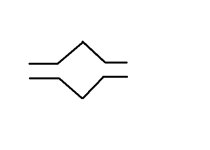chris in va
New member
I spend too much time thinking about 'what if'.
Say there's a rifle barrel at 20". There's a loud report due to gas expansion at the muzzle. Traditionally suppressors have been used to drop the decibels down a bit.
But what would happen if a slightly larger diameter extension was screwed on the end, say...3' long. Or 20'.
At what point would the excess gas fill said cylinder and render the gun 'silent', save for the supersonic bullet shockwave?
Slo-mo video shows powder gas expanding a few feet past the muzzle. I guess that's what I'm driving at.
Say there's a rifle barrel at 20". There's a loud report due to gas expansion at the muzzle. Traditionally suppressors have been used to drop the decibels down a bit.
But what would happen if a slightly larger diameter extension was screwed on the end, say...3' long. Or 20'.
At what point would the excess gas fill said cylinder and render the gun 'silent', save for the supersonic bullet shockwave?
Slo-mo video shows powder gas expanding a few feet past the muzzle. I guess that's what I'm driving at.


